News
1/12/2017
Nesrine Kherraz has started a postdoc on acoustic and seismic. Metamaterials on the project "Metapp", co-funded by Compagnia di San Paolo.
|
09/11/2017
Seminar by F. Bosia at the Cagliari Science Festival 2017:
" Dai nanomateriali bio-ispirati ai metamateriali per scudi sismici"
|
23/10/2017
Congratulations to Lucas Brely for having successfully defended his PhD thesis on " Numerical modelling of fracture and delamination phenomena in heterogeneous and hierarchical media " Photo
|
Research Interests
1. Bio-inspired materials:
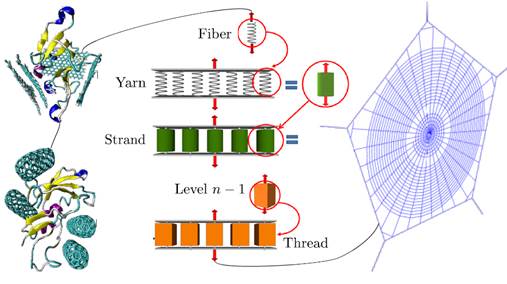
Many biological systems are characterized by hierarchical structures, i.e. they are composed by smaller components, which can be further composed by other structures at smaller length scales. This hierarchical organization, spanning over many levels with different interactions and across many orders of magnitude of length scale, provides peculiar mechanical properties, so that the whole system is more that the simple sum of its single constituents. In Nature, hierarchical structures are found in biological tissues, e.g. spider silk, tendons, and bones, but it also derives from evolutionary adaptation of anatomical parts, as the gecko paws, whose astonishing adhesive properties attracted in recent years increasing interests. The fundamental aim of research on bio-inspired materials is to mimic Nature in order to design artificial materials with new mechanical properties by exploiting mainly structural organization. By means of hierarchy it is possible to tune material properties such as strength, toughness, adhesion, friction. Our research focus on these aspects by means of numerical simulations and simplified models (e.g. fiber bundle model, random fuse model, spring-block model) aiming to highlight the fundamental mechanisms acting in presence of hierarchical structure and to identify the parameters allowing to modify the macroscopic mechanical properties. Further information: S. Signetti , F. Bosia , N. M. Pugno "Computational modeling of the mechanics of hierarchical materials", MRS Bulletin 41, 694-699 (2016) E. Lepore, F. Bosia, F. Bonaccorso, M. Bruna, S. Taioli, G. Garberoglio, A. C. Ferrari, N.M. Pugno, "Spider silk reinforced by graphene or carbon nanotubes", 2D Materials 4 (3), 031013 (2017) 2. Friction:
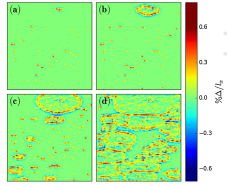
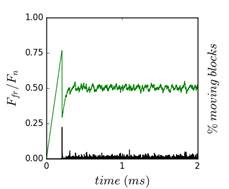
The fundamental laws of friction were already understood by Leonardo da Vinci, and later they were formulated in classical mechanics in the Amonton-Coulomb friction law: the static friction force is proportional to the applied normal load and independent of the apparent contact surface, and the kinetic friction is independent of the sliding velocity. Despite the apparent simplicity, this macroscopic emergent behaviour is actually the sum of different microscopic interactions, spanning from inter-atomic potentials and molecular adhesion forces, to asperity roughness and elastic plastic surface deformation. Providing a unified description of the whole phenomenon from atomistic to macroscopic length scale is an open problem in tribology. The situation is much more complicated if the surfaces are characterized by artificial structures, e.g. grooves, cavities or hierarchical patterning, modifying the geometry of the contact points. The aim of our research is to understand how the global friction coefficients are modified by surface patterning and what is the role of the hierarchy. Further information: G. Costagliola, F. Bosia, N. M. Pugno, "A 2-D model for friction of complex anisotropic surfaces", Journal of the Mechanics and Physics of Solids 112, (2018) A.I. Vakis, V.A. Yastrebov, J. Scheibert, L. Nicola, D. Dini, C. Minfray, A. Almqvist, M. Paggi, S. Lee, G. Limbert, J.F. Molinari, G. Anciaux, S. Echeverri Restrepo, A. Papangelo, P. Nicolini, R. Aghababei, C. Putignano, S. Stupkiewicz, J. Lengiewicz, G. Costagliola, F. Bosia, R. Guarino, N. Pugno, G. Carbone, M.H. Muser, M. Ciavarella, "Modeling and simulation in tribology across scales: An overview", Tribology International 125, 169-199 (2018) 3. Adhesion
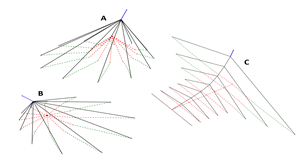
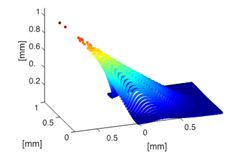
Adhesion of biological attachment structures, such as the contact units of geckos or sprider web anchorages, is usually described by adopting thin film peeling theories based on Griffith energy balance, due to their "tape-like" or "membrane" geometry. The energy balance describes at macroscopic scale the mechanism of fracture that takes place at the micro or nano scales in the vicinity of the crack front, or "peeling line". We have developed numerical models to understand the mechanical aspects of the peeling process of various structures, including hierarchical, by way of stress distribution analysis at the interface. Further information: L. Brely, F. Bosia, N. Pugno, " Emergence of the interplay between hierarchy and contact splitting in biological adhesion highlighted through a hierarchical shear lag model" Soft Matter 14, 5509 (2018) L. Brely, F. Bosia, N. Pugno, "The influence of substrate roughness, patterning, curvature and compliance in peeling problems" Bioinspiration & Biomimetics 13, 026004 (2018) 4. Elastic Metamaterials
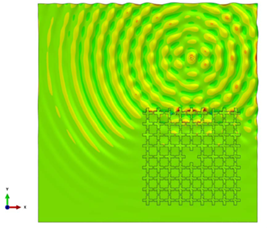
Elastic metamaterials are periodically arranged composite structures with advanced dynamic functionalities, e.g. the ability to generate Band Gaps (i.e. frequency ranges where the wave propagation is inhibited), wave focusing or collimation, negative refraction, and defect states. These features make elastic metamaterials attractive for various applications including seismic wave shielding, noise abatement, vibration isolation, acoustic cloaking, non-destructive evaluation, sub-wavelength imaging, and even thermal management. Currently, we are investigating innovative Metamaterial designs based on different concepts, including hierarchical or labyrinthine structures, viscoelastic metamaterials, pentamode lattices, tensegrity prisms, for applications in acoustics, ultrasonics, seismic and even water wave control Further information: M. Miniaci, A.O. Krushynska, F. Bosia, N.M. Pugno, "Large scale mechanical metamaterials as seismic shields", New Journal of Physics, 18: 083041, 2016 A. Krushynska, F. Bosia, N. Pugno, "Labyrinthine acoustic metamaterials with space-coiling channels for low-frequency sound control", Acta Acustica United With Acustica (2018), 104, 200-210 Collaborating Lab |
Funding
METAPP: "Hierarchical Metamaterials For Acoustic And Seismic Applications" Duration: 2017-2020 Funding: Progetto di Ateneo cofunded by Compagnia di SanPaolo Principal Investigator: Prof. Miguel Onorato | 
|
NEUROFIBRES: "Biofunctionalised Electroconducting Microfibres for the Treatment of Spinal Cord Injury" Duration: 2017-2020 Funding: FET Proactive n.732344 Principal Investigator: Jorge E. Collazos-Castro (Servicio de Salud de Castilla La Mancha, Spain) Third party: University of Torino | 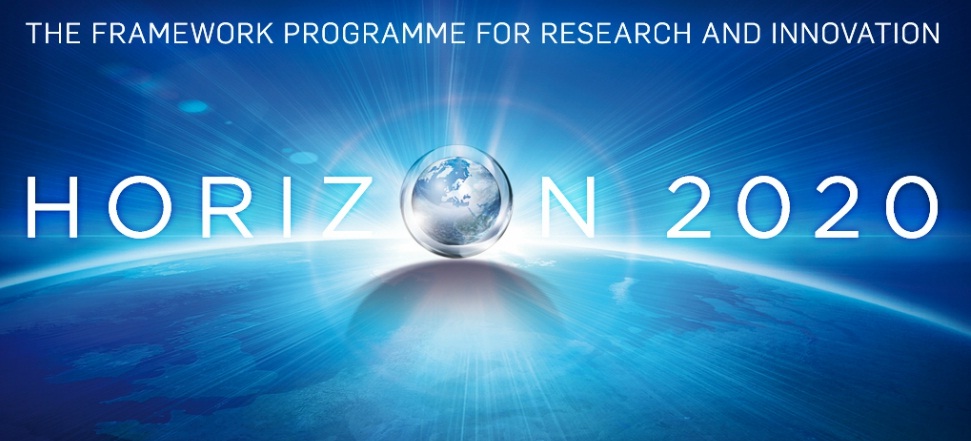
|
COST Action CA15216 Title: "European Network of Bioadhesion Expertise" Duration: 2016-2020 Funding: EU Framework Programme Horizon 2020 Supporting institution: COST Coordinator: Dr Janek von Byern, University of Vienna (Austria) | 
|
COST Action CA15125 DENORMS Title: "Design for Noise Reducing Materials and Structures" Duration: 2016-2020 Funding: EU Framework Programme Horizon 2020 Supporting institution: COST Coordinator: Mr Jean-Philippe Groby, CNRS (France) | 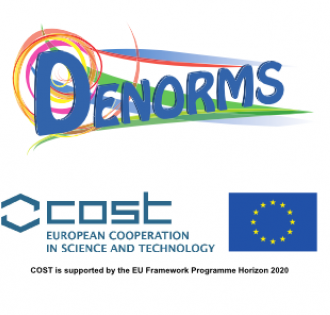
|
Recent publications
M. Miniaci, A. Krushynska, A.S. Gliozzi, N. Kherraz, F. Bosia, N. Pugno,
"Design and fabrication of bioinspired hierarchical dissipative elastic metamaterials", Physical Review Applied 10, 024012 (2018)
A. Krushynska, A. Amendola, F. Bosia, C. Daraio, N. Pugno, F. Fraternali
""Accordion-like metamaterials with tunable ultra-wide low-frequency band gap"", New Journal Of Physics 20, 073051 (2018) |